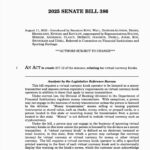Australian Authorities Uncover $123 Million Crypto Money Laundering Operation
Australian authorities have revealed a cryptocurrency crime syndicate accused of laundering $123 million. Four individuals have been charged in connection with this operation. This discovery stems from an 18-month crypto investigation led by Australian authorities. Members from the Australian Federal Police, Queensland Police Service, and Australian Criminal Intelligence Commission, along with other agencies, collaborated to investigate suspicious transactions beginning in December 2023. The joint effort, known as the Queensland Joint Organized Crime Taskforce (QJOCTF), followed the money flows of a ring member and uncovered a large-scale, sophisticated money laundering scheme involving front businesses and cryptocurrencies. Ultimately, authorities disclosed that a total of $123 million was laundered through this intricate operation, with the illicit funds eventually converted into cryptocurrencies.
Before delving into how the scheme operated, let’s first clarify what money laundering entails.
Understanding Money Laundering
Money laundering is the process of making illegal earnings appear legal. Criminals engage in money laundering to utilize the profits of their crimes without attracting the attention of authorities. Typically, this process occurs in three stages. The first stage is “placement,” where illegal funds are introduced into the financial system. Criminals often employ various techniques, such as:
- Smurfing: Involves depositing smaller amounts of criminal proceeds into bank accounts to keep individual deposits below a certain threshold and evade reporting.
- Commingling: This method mixes illicit money with legitimate income, often from cash-heavy businesses.
- False invoices: Fake transactions or inflated invoices may be utilized to justify the flow of illicit money between companies.
The following stage, termed “layering,” aims to obscure the source of the illicit funds further. Money is moved across different accounts and countries or converted into various forms, complicating tracing efforts. Once the money appears clean enough, the “integration” stage occurs, redistributing the funds to their owners. Laundered money may then be used for real estate purchases, luxury goods, or, in some scenarios, converted into cryptocurrencies.
To combat money laundering, numerous countries adhere to international standards established by the Financial Action Task Force (FATF), which include customer verification protocols, reporting suspicious activities, and stricter regulations on cryptocurrency exchanges.
Did you know? The United Nations Office on Drugs and Crime (UNODC) estimates that up to $5.54 trillion was laundered in 2024, equating to approximately 5% of global GDP.
How an Aussie Scam Ring Exploited Car Dealers and Crypto to Launder Illicit Funds
Although they ultimately failed, the Australian crypto scam ring developed a multi-step operation to circumvent Anti-Money Laundering (AML) measures. The ringleader operated a cash-in-transit security company that utilized couriers to collect illegal funds at dead drop locations across various cities, transporting them to Queensland. Upon receiving the money, the security firm transferred it to its front businesses using an armored vehicle, cleverly mixing illicit funds with legitimate currency to avoid suspicion. However, this was merely one simple tactic among several to mask the operation.
The subsequent step involved moving cash to a classic car dealership that managed multiple bank accounts. Car dealerships serve as ideal front businesses for money laundering, as they often handle substantial cash transactions, making it easier to blend illegal funds with genuine sales. Once the dealership acquired the money, it commingled illicit funds with legitimate earnings during bank deposits. To further conceal the funds’ origins, they transferred money between their bank accounts, and later, sent the laundered money to a sales promotion company that was also part of the operation.
The final step of the process involved the sales promotion company delivering the laundered funds. It converted a portion of the proceeds to cryptocurrencies, likely to add another layer of complexity, making tracking even more challenging. Ultimately, the funds reached beneficiaries via crypto or through third-party businesses.
Once the structure of the operation was clear, authorities acted swiftly to search related locations and bring the suspects to court. In June 2025, the QJOCTF conducted raids on 14 homes and businesses across Queensland. During these operations, authorities seized $170,000 worth of crypto assets, along with $30,000 in cash, business documents, and electronic devices. Law enforcement also froze 17 properties, vehicles, and funds across multiple bank accounts, with an estimated total value of frozen assets around $21 million.
Four individuals were charged as part of the Australian crypto investigation: the director and general manager of the security company, a man linked to the sales promotion company, and the owner of the classic car dealership. Each suspect faces serious charges, including dealing with crime proceeds and document forgery, with maximum penalties ranging from three years to life imprisonment. The investigation continues, and authorities indicate that additional individuals may face charges as they track connections within the broader network.
The Ongoing Debate on Crypto’s Link to Illegal Activities
The connection between cryptocurrency and illegal activities has been a longstanding argument among skeptics. Economist Nouriel Roubini has openly criticized cryptocurrency exchanges for facilitating money laundering activities. Meanwhile, Nobel laureate economist Paul Krugman asserts that a significant portion of crypto activity is criminal in nature. Blockchain analytics firms estimate that illicit crypto volume hit $51 billion in 2024. While this is a substantial figure, it represents only 0.14% of total crypto volume, and that percentage is trending downward.
Criminals may be drawn to crypto for several reasons:
- Cryptocurrency transactions provide a degree of anonymity unless conducted through a regulated centralized exchange.
- Blockchains operate as global networks without intermediaries, enabling users to transfer significant sums independent of traditional banking systems.
- Some crypto tools, such as mixers, offer enhanced privacy features, making transactions harder to trace.
Yet, the same attributes that appeal to criminals can also lead to their capture. Unlike cash, cryptocurrencies leave a permanent trail. Each transaction is documented on a public ledger that cannot be erased or altered. Blockchain analytics firms and law enforcement agencies are capable of following these trails across wallets and exchanges to identify wrongdoers.
A notable example can be seen in a US Federal Bureau of Investigation operation conducted in 2023. The agency was probing ransom payments related to the Caesars cyberattack, where attackers demanded cryptocurrency as ransom, hoping it would conceal their identities. However, the transparency of blockchain technology provided the FBI with a significant investigative advantage.
The agency tracked the ransom through wallets and noted that the funds were directed to two wallets with no prior transaction history. This alone constituted strong evidence indicating that these wallets were solely established for crypto money laundering, a claim more challenging to substantiate through conventional methods. The FBI continued to follow the blockchain records and ultimately froze the assets before they could be cashed out.
This particular crypto case underlines the fact that blockchain crime can be a double-edged sword. Features that draw criminals to these technologies can quickly transform into the evidence that leads to their conviction.



















